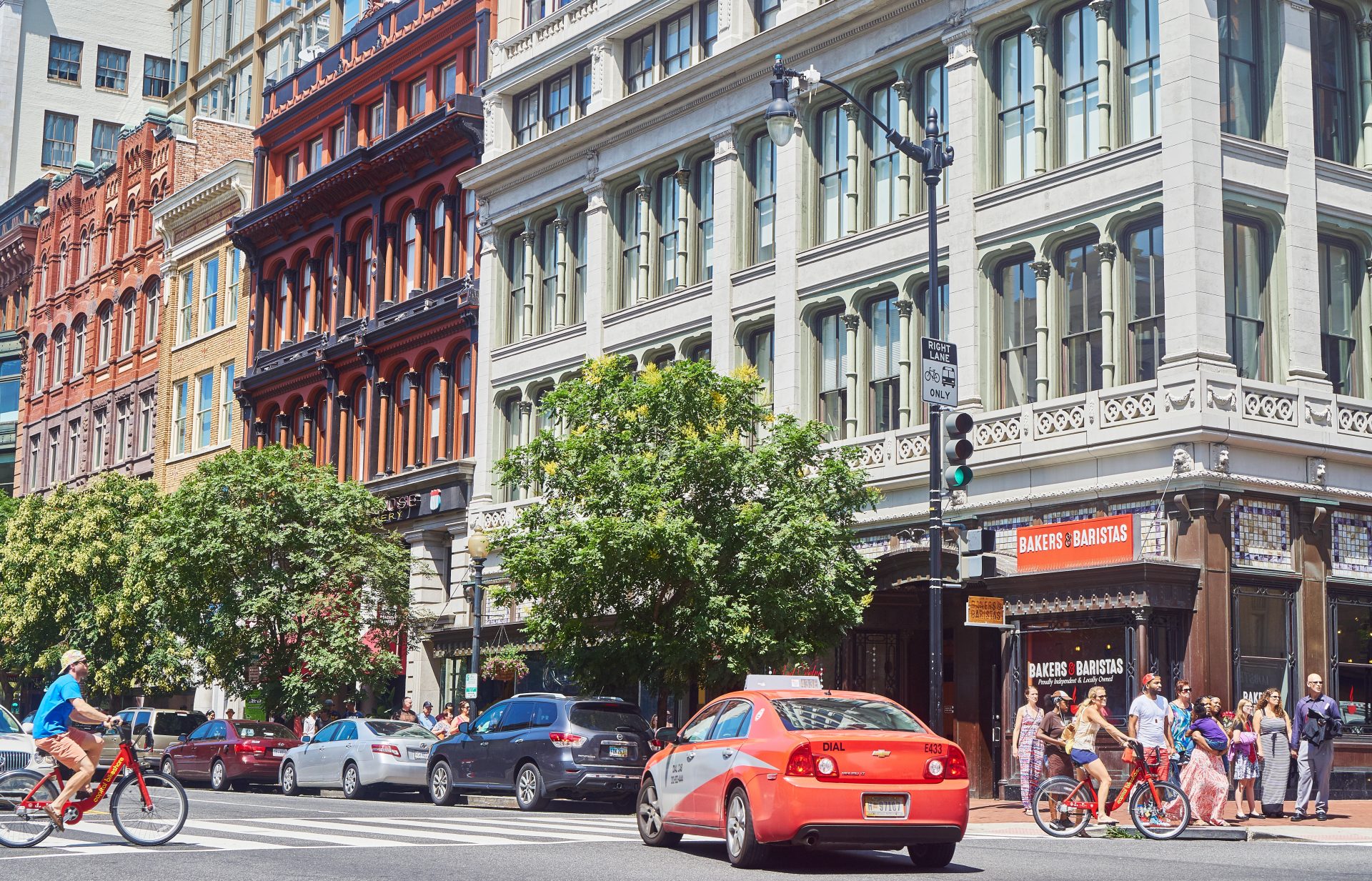In cities, small college towns, and other communities, multiple transport services, such as ride hailing, e-scooters, and delivery vehicles are redefining the curb space. Due to multiple actors operating within a limited area, curb space across America has become competitive. These new challenges bring opportunity for coordination across counties, states, and regions. Communities can harness the new potential of the curb to promote more accessibility for people with disabilities and to accommodate more sustainable transportation options. With curb management, municipalities and their partners can reclaim the public-way and ensure that it is equitably available to serve the most people and best interests of a community. Curb management starts with ensuring that the built environment is accessible for all users.
In early 2019, the city of Portland settled a class action lawsuit with people with disabilities. The city has agreed to spend $113 million to upgrade more than 16,000 sidewalks over the next twelve years. Sidewalks, clearly painted street markings, and signage are the necessary first steps to make the walkshed more accessible and to begin regulating the curb.These infrastructure improvements lay the groundwork for curb management and making mobility more accessible for all.
According to a recent study released by Metro Transit in the Twin Cities, true walkshed analysis, or analysis of the walkability of an area and access to transit, enables better ADA compliance planning, pedestrian infrastructure planning, and multi-modal trip planning. The study suggests that collaboration would allow various agencies to come to agreement on the scope and quality of network data, ensuring regional consistency and agreed upon data integrity. This sort of data collection and more realistic analysis of walksheds allows for the beginnings of curb management and better planning and prioritizing of people with disabilities and multimodal trips. If interested in learning more about walkshed analysis or sidewalk mapping, check out this Mobility Lines blog on the topic.
Curb management can also be a part of complete streets policies and complete trip strategies. When municipalities and mobility providers work together to build more walkable communities, to capture transportation data, and to invest in great public spaces, the result is more access, more options, and better health outcomes for travelers and the community as a whole.
Curb management compliments multimodal trips and transit initiatives like transit signal priority. Officials in Kansas City have worked closely with the Kansas City Area Transportation Authority (KCATA) to promote transit signal priority along their system routes . Managing the public right of way through curb management, transit signal priority, and other methods allows for decision makers to prioritize accessibility and mobility for all travelers. When municipalities invest in sidewalk infrastructure, ADA upgrades, and data collection, mobility barriers are removed. Curb management is an emerging tool that can improve mobility access in communities and promote a more sustainable mobility future.
Image Credit : Jarret Stewart – Downtown D

